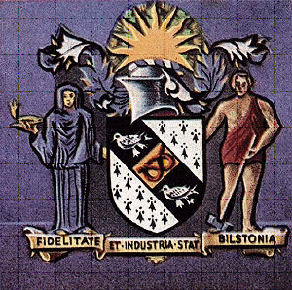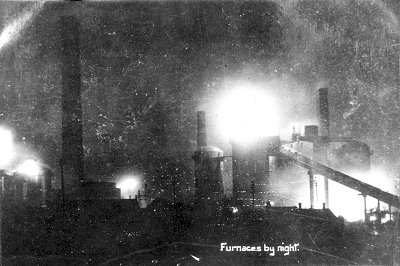 |
A History of Bilston7. Bilston in The Twentieth Century |
|
It has been seen that Bilston, until the time of the development of the South Staffordshire Coalfields, abounded in woods and meadowlands. In the early 20th century there were still a few farms between Willenhall and Bilston. The road was bounded on each side by fields and there was an occasional house to be seen. During the 20th century the two towns almost merged into each other. Agriculture today in Bilston is non-existent. Up until 1951 a Mr. Beddows owned a few cows and they grazed on a field near the sewage beds on the Lunt Estate (the site of the ancient Lunt Piece) and he delivered milk to a few customers daily. He housed the cows in his stables in Becket Street, not far from the Lunt Estate.
The agricultural land was all lost to industry and to housing. The mid-century figures for employment in Bilston tell their own story. There was an overwhelming emphasis on metal work and mechanical engineering. The figures in the list show too an extraordinary increase in mechanical engineering, as new subsidiary industries developed and the town started to produce a wider range of goods.
A feature of industry in Bilston was the employment of females in the factories. The majority of this female labour was supplied by married women who went out to work to help with the family "purse". A small percentage had jobs such as cleaning offices, making and taking the tea round factory or as canteen assistants. The biggest percentage was employed inside the factories using hand-presses and such mechanical machines which did not require much skill but are very monotonous. In every factory the percentage of female labour was almost equal to that of the male labour.
Nevertheless the dominant feature of the industry in Bilston was Stewart and Lloyd�s Steel works, situated on the side of the canal to the west of the town, which was the major employer. It was eventually nationalised under the name of the British Steel Corporation.

By the middle of the 20th century the town was characterised by large areas of derelict land, central over crowding and compression. There was an intermixing of housing and industry even within the heart of the town as houses had developed into workshops and factories. The growth of communications - road, rail and canal - had tended to constrict the town physically and rendered the approach to community development a difficult problem. The lack of diverse industry, which necessitated the entry of each generation into a declining occupation, resulted in a perpetuation of social conditions which presented a picture of slums and overcrowding to a degree that was considerable for the size of the town.
In the years after the Second World War plans for reconstruction were drawn up and extensive slum clearance and the building of new housing estates took place. But as the century wore on so Bilston's economic circumstances worsened as the country's plight worsened. Bilston, with its reliance on a single large steel works and a metal working industry, was particularly hard hit. The single most notable event was the closure of the steel works. Unemployment figures ran at record levels. The deterioration of the town centre was a particularly noticeable consequence. The end of the century saw something of an upturn, with new roads being built to foster new industrial and commercial development. Some industrial activity remains but the town seems, to many, to be slowly finding a new and quite different role, as a commercial, service and residential area. The old way of life and the old communities have all but gone.
click here to return to Bilston History Contents Page click here to return to the Industry Page